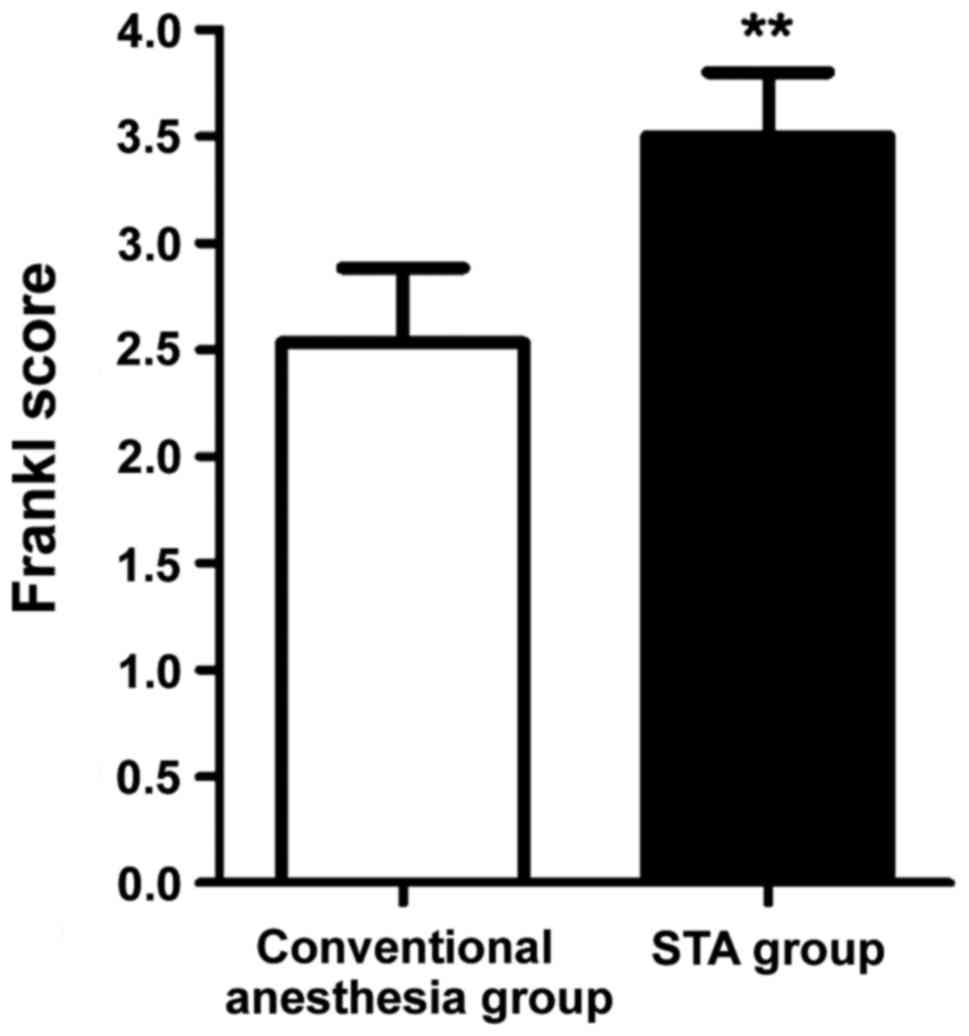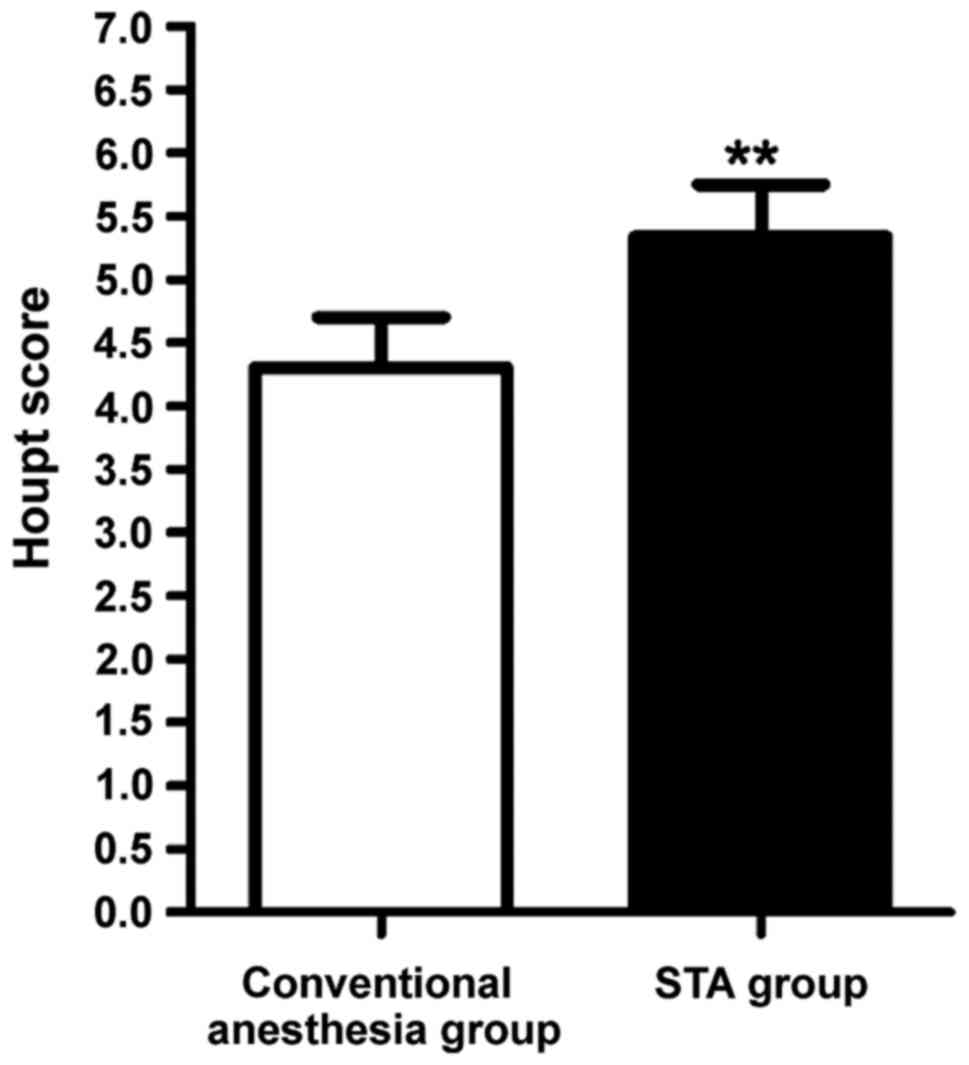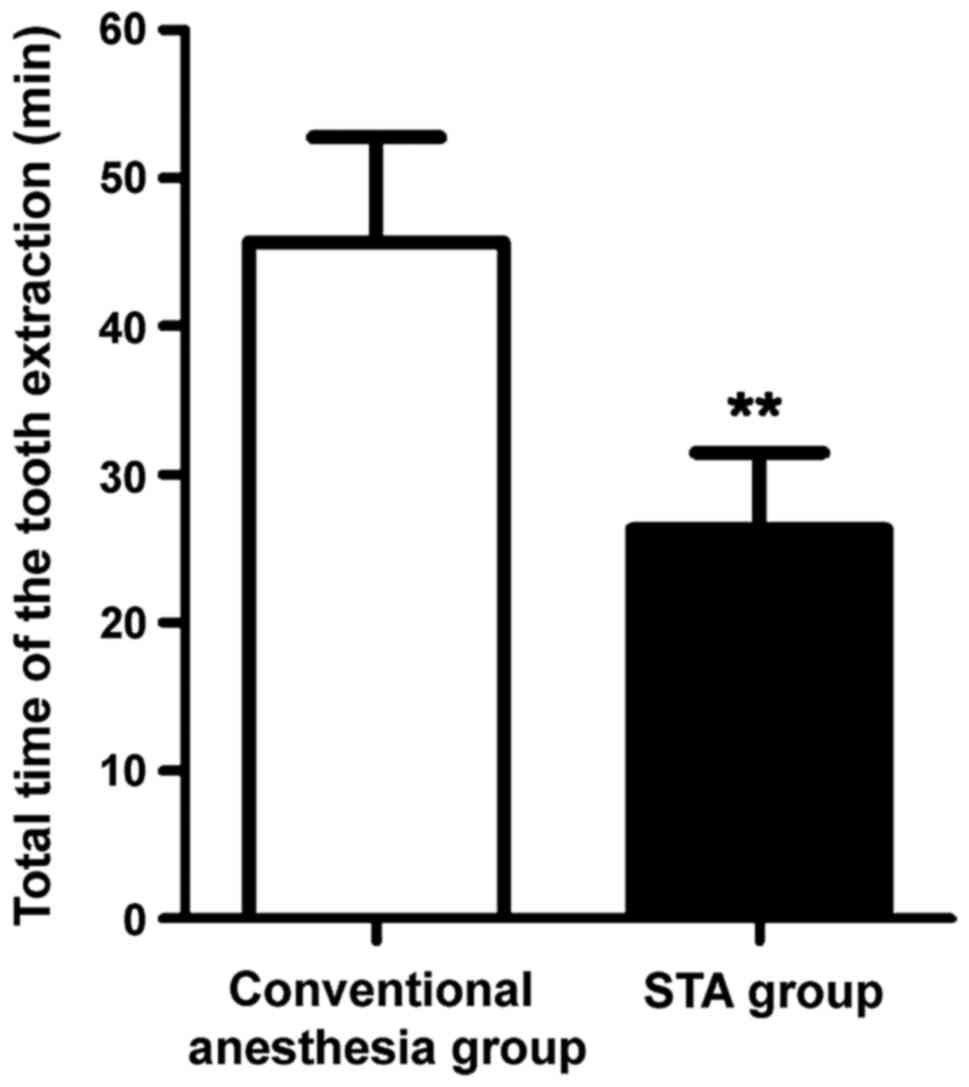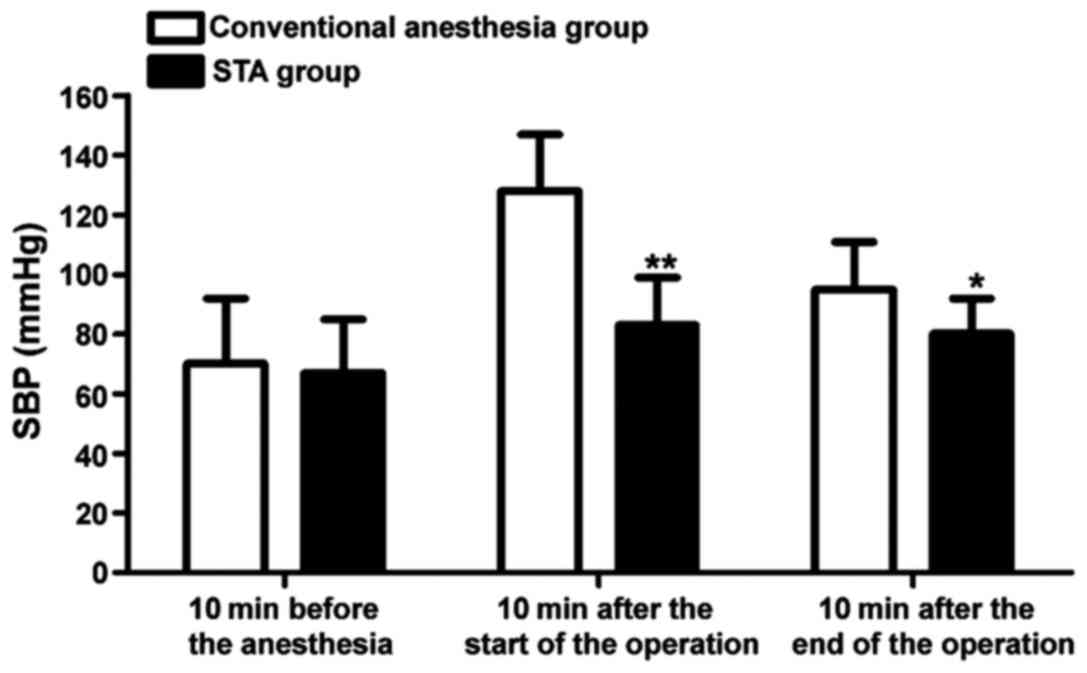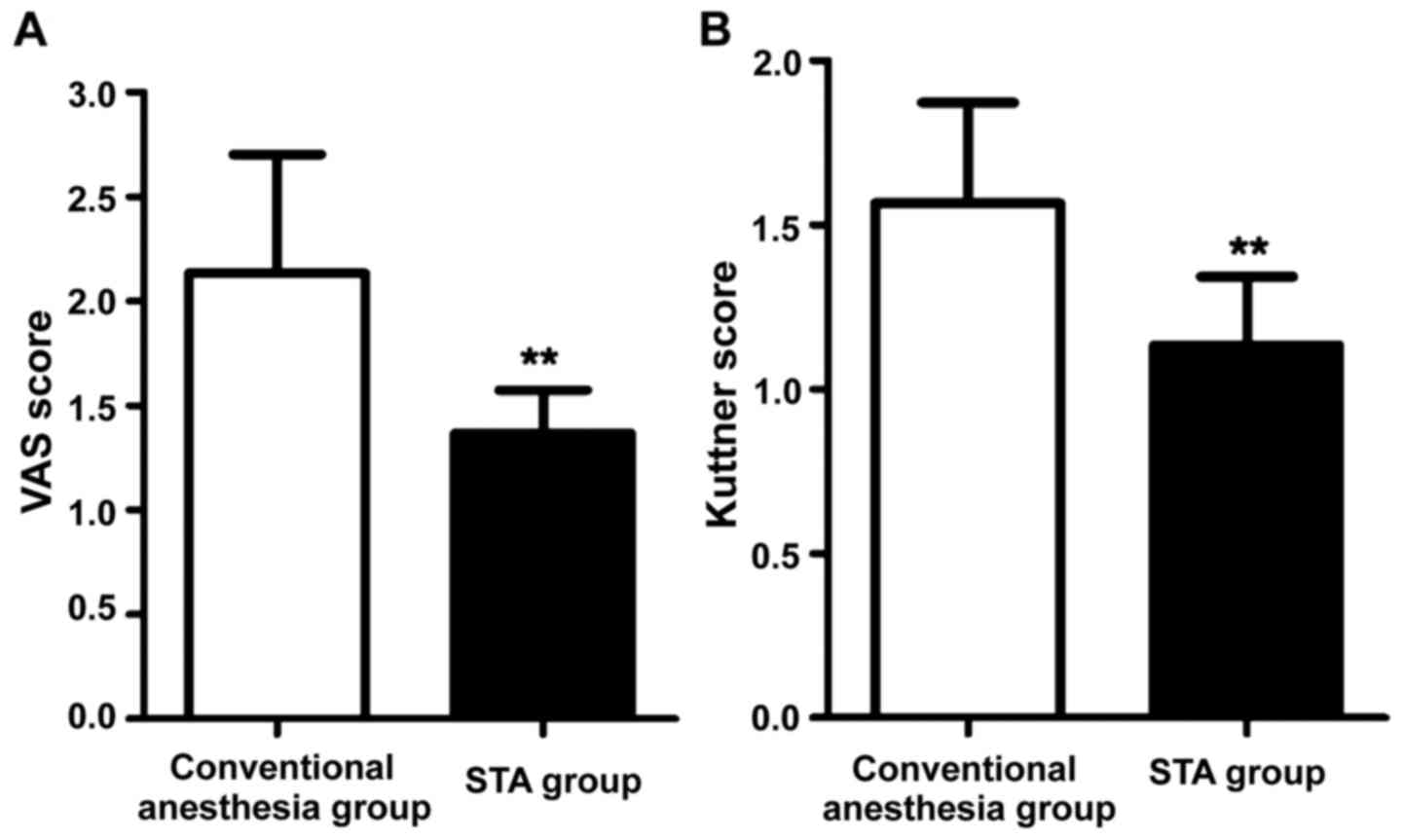Effect of painless STA on tooth extraction of elderly patients with periodontal diseases
- Authors:
- Published online on: January 19, 2018 https://doi.org/10.3892/etm.2018.5776
- Pages: 2956-2960
-
Copyright: © Feng et al. This is an open access article distributed under the terms of Creative Commons Attribution License.
Metrics: Total
Views: 0 (Spandidos Publications: | PMC Statistics: )
Total PDF Downloads: 0 (Spandidos Publications: | PMC Statistics: )
Abstract
This study compared the effects of tooth extractions under novel painless single tooth anesthesia (STA) and conventional anesthesia on elderly patients with periodontal diseases, and the impact of painless STA on clinical indicators of the patients. Elderly patients (n=116) with periodontal diseases who were treated in Jinan Central Hospital were selected to undergo extraction operation on loose teeth; all the patients were randomly divided into two groups. The tooth extraction operations were performed after painless STA and cartridge anesthesia; the effects of the tooth extraction operations and the operation time were recorded; Visual Analogue Scale (VAS), Kuttner facial expression scale, Frankl treatment compliance scale and Houpt behavior rating scale were utilized to assess and record the clinical indicators of the patients during the operations; the impacts of the two anesthesia techniques on the effect of the tooth extraction of patients with periodontal diseases were comprehensively analyzed. Compared with conventional cartridge anesthesia, painless STA could effectively shorten the operation time (P<0.01); the Frankl treatment compliance score and Houpt behavior rating score of patients receiving painless STA were remarkably higher than those of patients receiving conventional cartridge anesthesia (P<0.01); during the operation, painless STA could effectively reduce the blood pressure and slow the heart rate by comparing with cartridge anesthesia (P<0.01, P<0.05); the scores of STA and Kuttner facial expressions in patients receiving painless STA were significantly lower than those in patients receiving conventional cartridge anesthesia (P<0.01); after the operation, the incidence of adverse reactions, such as pain and swelling, in patients receiving painless STA was obviously decreased compared with that in patients receiving conventional cartridge anesthesia (P<0.01). The novel painless STA can notably shorten the time of tooth extraction of elderly patients with periodontal diseases, reduce postoperative pain and swelling, increase the compliance of the operation, alleviate the impact of tooth extraction operation on the clinical indicators of the patients and relieve the pain of patients caused by the operation.



